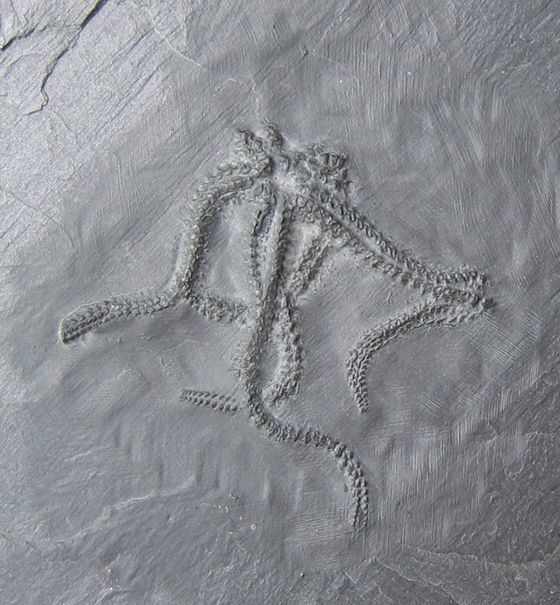
 |
 |
Devonian
Period: 416-359.2 Million Years Ago
Germany
Germany
The Hunsrück Slate The
Hunsrück Slate in Bundenbach, Germany is lower Devonian
(390 million years ago). Both the Hunsrück Slate and the
Burgess Shale represent marine benthic communities living
above a muddy seabed at a depth of less than 200m. All
of the fish groups except the chondrichthyans (which had
not yet evolved) are represented with agnathans and placoderms
being the most common. Among the Echinoderms the starfish,
brittlestars, and crinoids are the most common. Polychaete
worms are a rare find and represent the Annelids. Among
arthropods, trilobites are common, while crustaceans, and
chelicerates are rare. Sponges, corals, brachiopods, and
mollusks are also found in the Hunsrück, but are not numerous.
Small pieces of plant material washed out to sea along
with fish coprolites, burrows, and tracks are also preserved
(Selden & Nudds, 2004, pp. 37-46). |
 Brittle Star Urasterella asperula Devonian Budenbach, Germany Specimen is 3 cm x 3.5 cm |
Bibliography |
| Selden P. & Nudds, J. (2004). Evolution of Fossil Ecosystems. Chicago: The University of Chicago Press. |










